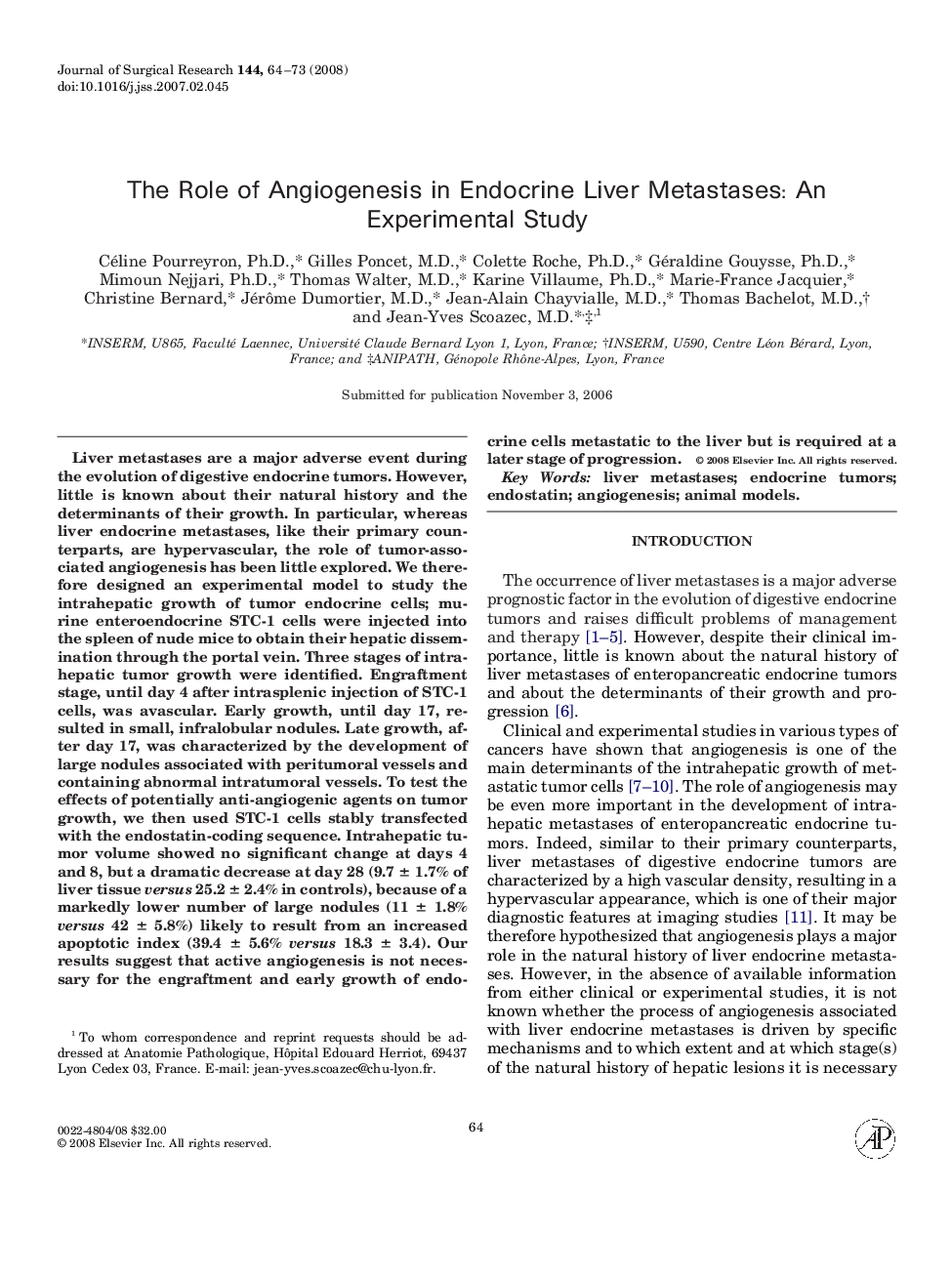| Article ID | Journal | Published Year | Pages | File Type |
|---|---|---|---|---|
| 4304237 | Journal of Surgical Research | 2008 | 10 Pages |
Abstract
Liver metastases are a major adverse event during the evolution of digestive endocrine tumors. However, little is known about their natural history and the determinants of their growth. In particular, whereas liver endocrine metastases, like their primary counterparts, are hypervascular, the role of tumor-associated angiogenesis has been little explored. We therefore designed an experimental model to study the intrahepatic growth of tumor endocrine cells; murine enteroendocrine STC-1 cells were injected into the spleen of nude mice to obtain their hepatic dissemination through the portal vein. Three stages of intrahepatic tumor growth were identified. Engraftment stage, until day 4 after intrasplenic injection of STC-1 cells, was avascular. Early growth, until day 17, resulted in small, infralobular nodules. Late growth, after day 17, was characterized by the development of large nodules associated with peritumoral vessels and containing abnormal intratumoral vessels. To test the effects of potentially anti-angiogenic agents on tumor growth, we then used STC-1 cells stably transfected with the endostatin-coding sequence. Intrahepatic tumor volume showed no significant change at days 4 and 8, but a dramatic decrease at day 28 (9.7 ± 1.7% of liver tissue versus 25.2 ± 2.4% in controls), because of a markedly lower number of large nodules (11 ± 1.8% versus 42 ± 5.8%) likely to result from an increased apoptotic index (39.4 ± 5.6% versus 18.3 ± 3.4). Our results suggest that active angiogenesis is not necessary for the engraftment and early growth of endocrine cells metastatic to the liver but is required at a later stage of progression.
Related Topics
Health Sciences
Medicine and Dentistry
Surgery
Authors
Céline Ph.D., Gilles M.D., Colette Ph.D., Géraldine Ph.D., Mimoun Ph.D., Thomas M.D., Karine Ph.D., Marie-France Jacquier, Christine Bernard, Jérôme M.D., Jean-Alain M.D., Thomas M.D., Jean-Yves M.D.,
